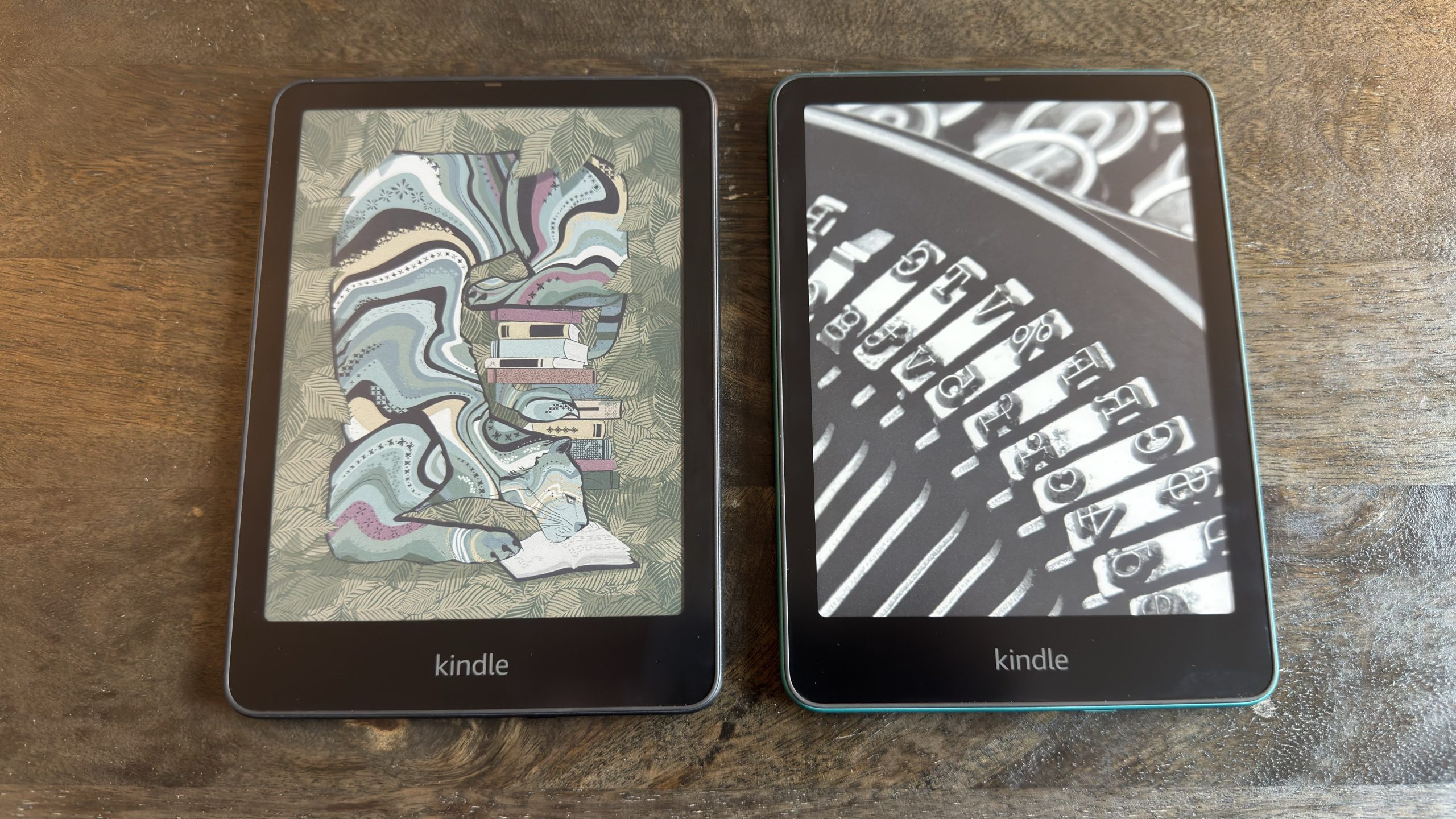We may earn a commission from links on this page.
The Kindle Colorsoft is Amazon’s most expensive e-reader (technically, the Kindle Scribe is more of an e-note), but that doesn’t automatically make it the best Kindle. In fact, if you mostly use your Kindle for novels or even black-and-white manga rather than color comics or picture books, the Colorsoft will actively make that content look worse. While I’ve been banging this drum about color e-readers for a while, you don’t have to take my word for it: Amazon actually used to warn buyers about this too, but has since taken that warning down.
As far back as February, according to a page saved by The Internet Archive, Amazon’s FAQ for the Kindle Colorsoft included the following frank commentary on the device’s shortcomings:
“The Colorsoft display is distinct from the Paperwhite display. The Kindle Colorsoft is designed to provide a high-quality reading experience in both color and black and white. You may notice that the texture or brightness of the display looks different than the Kindle Paperwhite display. That’s because of the color filter layer that creates the easy on the eyes color reading experience on Kindle Colorsoft. If you are looking for a slightly crisper black and white reading experience, you may want to check out Kindle Paperwhite, which has the fastest page turns and highest contrast ratio of any 2024 Kindle device.”
While not outright derogatory towards the company’s color products, the explanation was a noteworthy in that it did admit that the Kindle Paperwhite, despite being less expensive, offers a crisper black and white experience. (Why? Because the color filter in the Colorsoft, which is there whether it’s actively being displayed or not, lowers the contrast and can add unwanted texture and shine to text even when you’re reading reading black-and-white content).
Apparently someone at Amazon corporate thought it was time for a change, and one at the expense of prospective buyers. Over the weekend, the company changed the Colorsoft FAQ once again, and it now reads as follows:
The Colorsoft display is distinct from the Paperwhite display, and includes a fully optimized display stack to deliver high quality color reading. The black and white resolution (300ppi) is the same across devices.
That’s much less clear. While not outright lying, the new disclaimer sidesteps the device’s shortcomings, instead simply acknowledging that the Colorsoft has a “high quality” color experience while bringing up an unrelated note about black-and-white resolution. That’s a misdirect—the Colorsoft’s issues with contrast and artifacts remain, despite matching the Paperwhite in black-and-white resolution, as seen in the picture below.
Credit: Michelle Ehrhardt
It’s an understandable move from a marketing perspective, but also a disappointing deletion of a rare moment of honesty from a big brand, while emphasizing the larger anxiety behind color e-Ink. (I reached out to Amazon for comment, and will update this story if I hear back.)
Color e-ink isn’t really ready for the market
Frankly, I don’t think most adults have a need for color e-Ink. Unless you’re a big comic book reader, there’s a good chance that what you’re reading on your Kindle is in black-and-white. And if that’s the case, you’re going to get a better experience by paying less for a device without a color filter. I can see why Amazon would be cagey about it.
Credit: Amazon
But with charts and pricing like the above, that’s not strictly intuitive, and it’s why I appreciated the clarification provided on the old FAQ page so much, especially because it was willing to direct users looking for a specific experience towards a better product for them, even at the expense of profit for Amazon.
The new description instead seems tailor made to make it seem like the Paperwhite and Colorsoft are about on par for black-and-white content, but that the Colorsoft also has color, which is just not true. It’s actually the misconception I always correct first when writing about this product category, and I’m disappointed to see Amazon change its messaging to spread it. While color e-Ink has a niche appeal, trickery and obfuscation is not the way to sell it.
